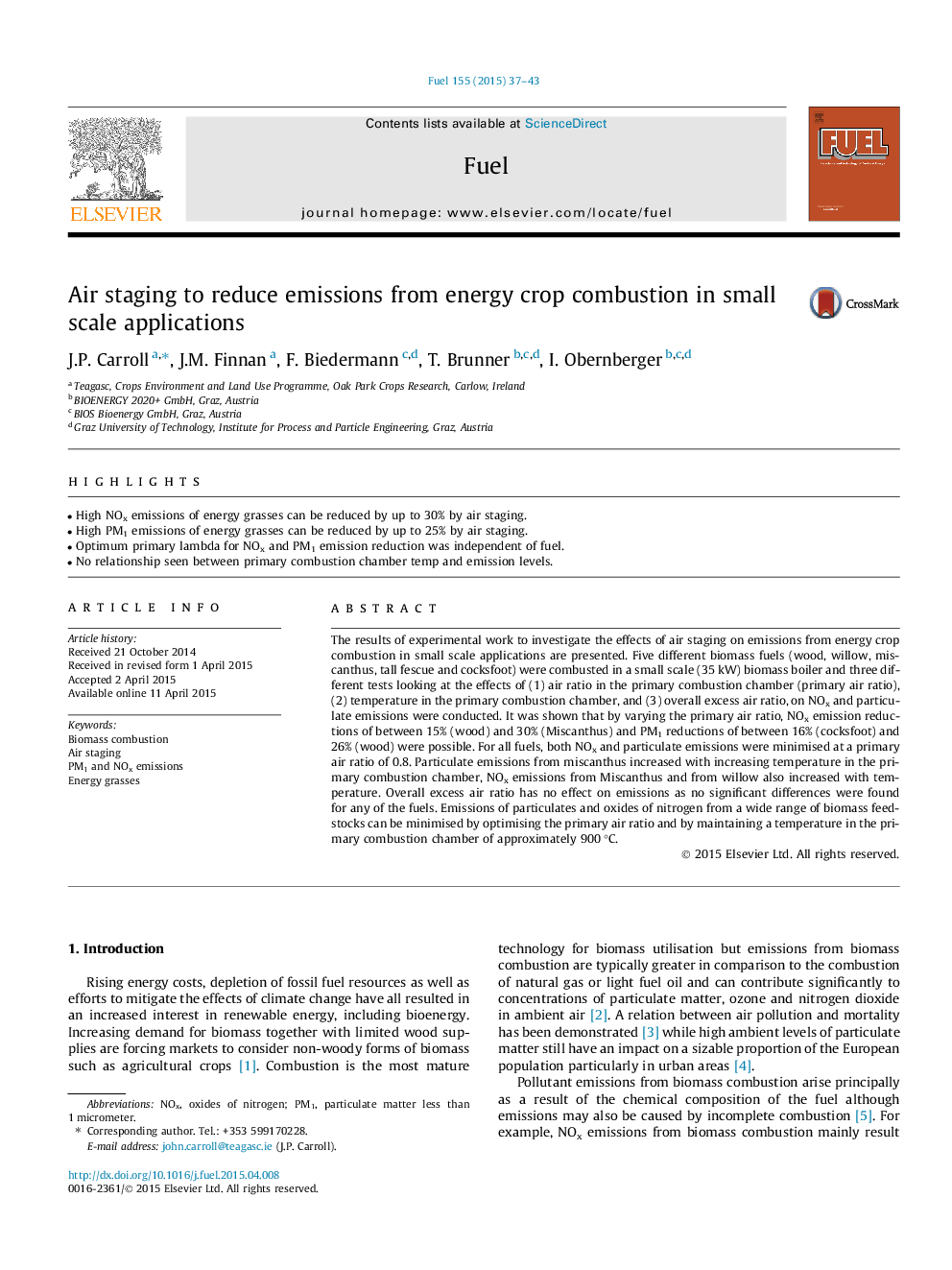| Article ID | Journal | Published Year | Pages | File Type |
|---|---|---|---|---|
| 205596 | Fuel | 2015 | 7 Pages |
•High NOx emissions of energy grasses can be reduced by up to 30% by air staging.•High PM1 emissions of energy grasses can be reduced by up to 25% by air staging.•Optimum primary lambda for NOx and PM1 emission reduction was independent of fuel.•No relationship seen between primary combustion chamber temp and emission levels.
The results of experimental work to investigate the effects of air staging on emissions from energy crop combustion in small scale applications are presented. Five different biomass fuels (wood, willow, miscanthus, tall fescue and cocksfoot) were combusted in a small scale (35 kW) biomass boiler and three different tests looking at the effects of (1) air ratio in the primary combustion chamber (primary air ratio), (2) temperature in the primary combustion chamber, and (3) overall excess air ratio, on NOx and particulate emissions were conducted. It was shown that by varying the primary air ratio, NOx emission reductions of between 15% (wood) and 30% (Miscanthus) and PM1 reductions of between 16% (cocksfoot) and 26% (wood) were possible. For all fuels, both NOx and particulate emissions were minimised at a primary air ratio of 0.8. Particulate emissions from miscanthus increased with increasing temperature in the primary combustion chamber, NOx emissions from Miscanthus and from willow also increased with temperature. Overall excess air ratio has no effect on emissions as no significant differences were found for any of the fuels. Emissions of particulates and oxides of nitrogen from a wide range of biomass feedstocks can be minimised by optimising the primary air ratio and by maintaining a temperature in the primary combustion chamber of approximately 900 °C.
